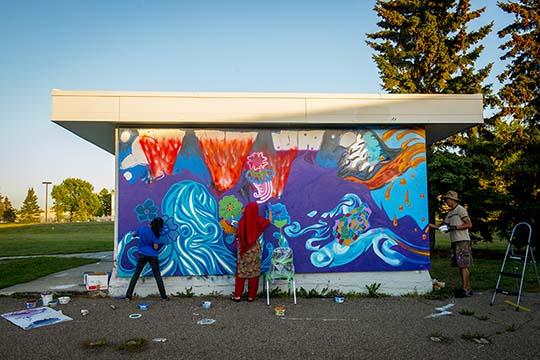The number of drivers the City of Ottawa ticketed for using an accessible parking spot without displaying a permit increased 38 per cent from 2013 to 2014, with the majority of those violations taking place at big shopping centres like Walmart.
Parking control officials wrote up 1,678 tickets in 2014 up from 1,231 tickets in 2013, according to an analysis of data that tracks parking violations obtained from the City of Ottawa through a municipal freedom of information request.
That is the highest number of tickets for this parking violation issued in a single year since 2009.
The City of Ottawa did not provide comment, despite repeated requests for an interview.
Drivers are caught for illegally using accessible parking spaces most often in parking lots at shopping malls or plazas, according to the city’s dataset. In 2014 the city issued 82 tickets — the highest number of any location in the city — in front of the Walmart at 450 Terminal Avenue.
Priya Hecktus, general manager of the Walmart Trainyards Supercentre, said some store customers have brought the issue to her attention but not enough to make the problem “alarming.”
“We do get complaints once in a while from customers,” she said. “It’s not a lot but it’s on our radar.”
When asked whether Walmart has considered any action given the number of people who misuse the accessible spots in the store’s parking lot, Hecktus said it’s not on the store’s agenda at the moment.
“We don’t see enough of it to be a problem,” she said. “I know that we recently got our parking lots redone just to make sure that they were clear… the designated spots.”

The city’s traffic and parking bylaw requires all parking lots in the city with 20 to 99 public parking spaces to reserve at least one spot for drivers with accessible parking permits. Another accessible parking space must be added for every additional 100 parking spots.
Hecktus said there’s been no communication between her store and the City of Ottawa about the matter.
Other top five hotspots for this parking violation include the Place d’Orléans shopping mall in Ottawa’s east end, a plaza near Heron Road and Bank Street, and the St. Laurent Shopping Centre.
Curtis Fortowsky, general manager of Place d’Orléans Shopping Centre, said the number of tickets issued in the mall’s parking lot isn’t entirely surprising. He said police tend to patrol the mall’s property “quite often” and a few of the mall’s security officers are in fact licensed by the City of Ottawa to write parking tickets, although it’s not what they do full-time.
“They’ll periodically go out and check but it’s certainly not something they do on a targeting basis,” he said said.
Fortowsky said the issue is a hard one to tackle but not everyone does it with bad intentions.
“Sometimes it’s as simple as someone forgetting to put down their permit sign and sometimes it’s blatant misuse,” he said.

In order to park in a disability parking spot, the permit holder needs to be a driver or a passenger in the vehicle, and the accessible parking pass must be displayed on the dashboard or sun visor, according to the city’s parking bylaw.
The fine for failing to comply with the regulations is $350 if paid within 15 days, as noted on the City of Ottawa’s website. After 15 days the fine increases to $450.
The parking bylaw specifies that if a person who is ticketed for parking in an accessible spot without displaying a permit obtains or presents a valid permit within 30 days of the ticket’s issue date, they will be exempt from the fine.




